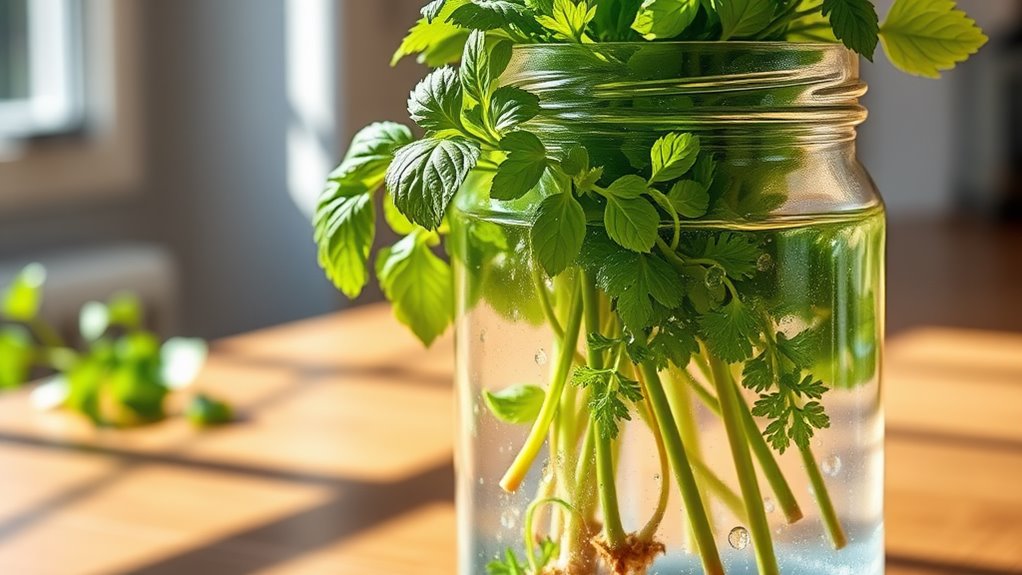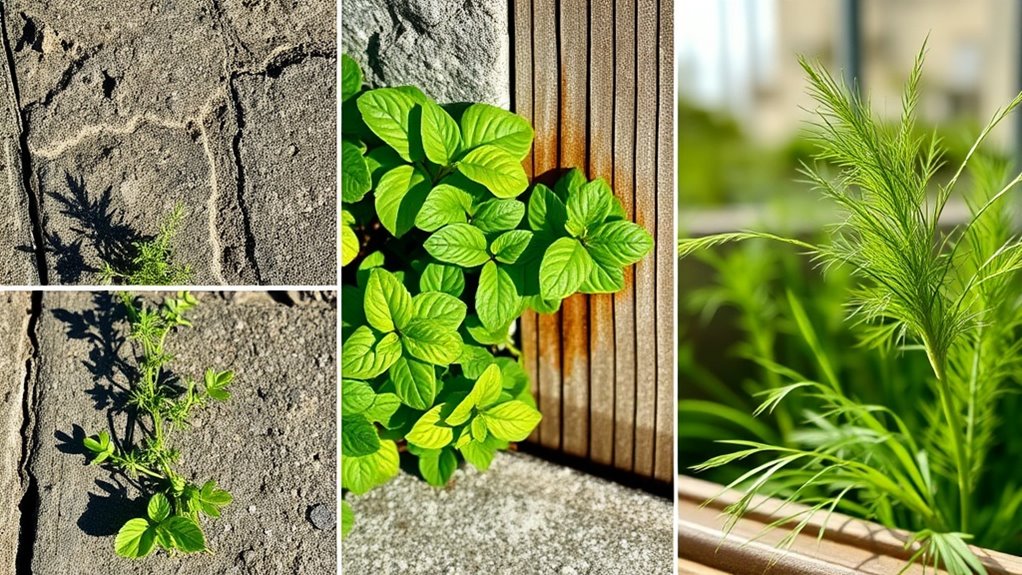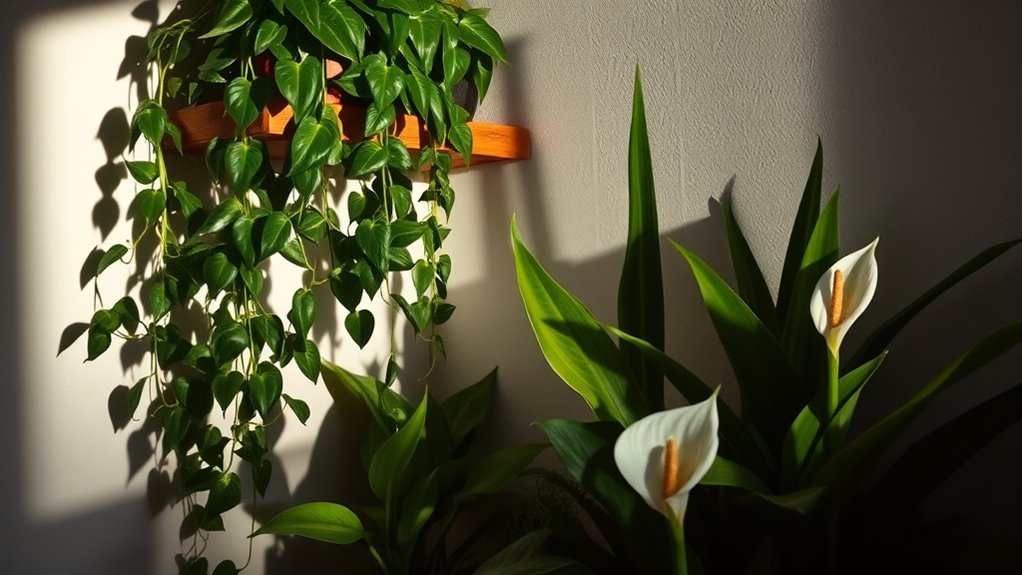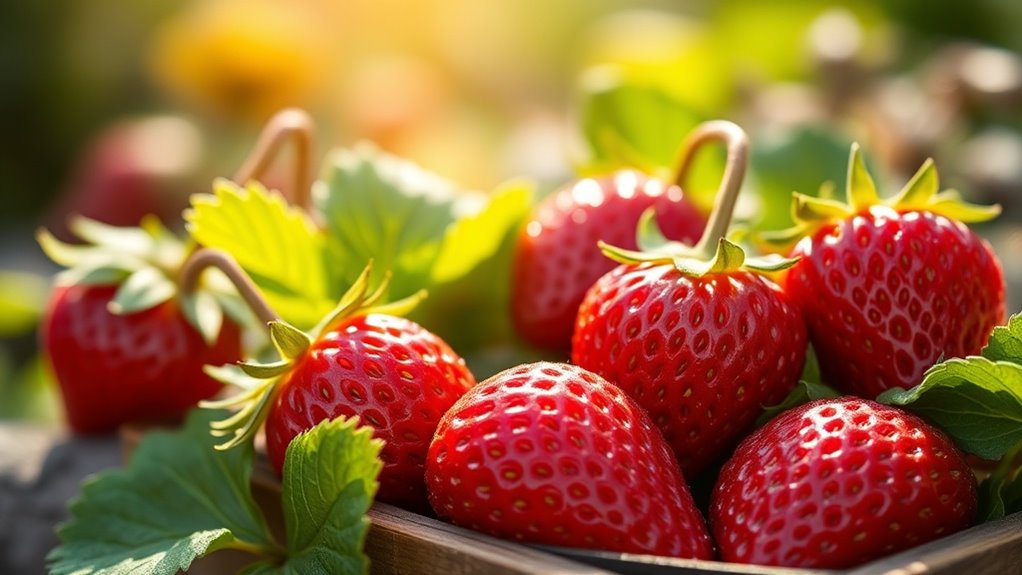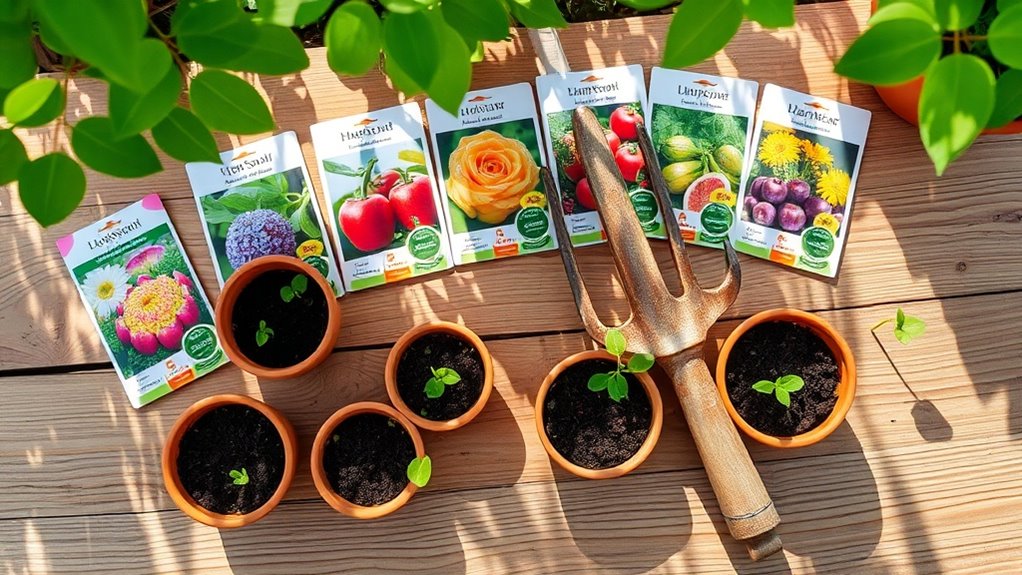How to Grow Basil, Mint, and Parsley in Just Water
Many people believe that growing herbs like basil, mint, and parsley in just water is a simple task, but the truth lies in the details. It’s not merely about placing cuttings in a jar; several factors influence their growth and health. Understanding how to select the right herbs, prepare cuttings, and maintain water quality can significantly impact your success. Discover how to effectively nurture these herbs in water and enjoy a thriving indoor garden.
Key Takeaways
- Select healthy cuttings of basil, mint, and parsley, ensuring they have at least a few nodes submerged for optimal root development.
- Use clean, clear containers like glass jars, ensuring they are deep enough (4-6 inches) to accommodate root systems.
- Position the setup in indirect sunlight or under full-spectrum LED grow lights for 12-16 hours daily to encourage growth.
- Change the water weekly with filtered or distilled water, maintaining a pH level between 5.5 and 6.5 for nutrient absorption.
- Harvest leaves in the morning just above a node to promote bushier growth and ensure continuous supply using the cut-and-come-again method.
Selecting the Right Herbs for Water Growth
When it comes to selecting the right herbs for water growth, you’ll want to focus on varieties that thrive in hydroponic conditions.
Basil, mint, and parsley are excellent options, as they adapt well to being grown in water.
These herbs in water need minimal nutrients, making them ideal for beginners.
Look for healthy cuttings, ensuring they’ve at least a few nodes submerged to encourage root development.
Avoid herbs like rosemary or thyme, which prefer drier conditions. Additionally, these herbs can be propagated easily from healthy cuttings, allowing for a continuous supply of fresh leaves.
Preparing Herb Cuttings
Start by taking healthy cuttings from your chosen herbs, aiming for stems that are at least 4-6 inches long.
Use clean, sharp scissors to make a diagonal cut just below a node, where leaves emerge.
This increases the surface area for water absorption.
Remove the lower leaves from the cutting, ensuring only a few remain at the top.
This helps prevent rot when submerged.
Rinse the cuttings gently to remove any dirt or pests.
Finally, place the cuttings in a glass of water, ensuring the nodes are submerged while keeping the leaves above water.
This prepares your herbs for successful growth, as growing herbs in water can enhance their flavor and freshness.
Choosing the Right Container
Selecting the right container is crucial for the successful growth of your herb cuttings in water. Opt for clear containers, like glass jars or vases, which allow you to monitor root development.
Ensure the container is clean to prevent algal growth and bacterial contamination. Choose a container with a suitable height; deeper containers support longer roots.
If you’re using plastic, ensure it’s food-safe to avoid harmful chemical leaching. Avoid narrow openings, as they can restrict air circulation.
Remember to secure the cuttings in place, so they stay submerged without floating. This careful selection lays the foundation for healthy, thriving herbs. Additionally, using micro herb gardening can enhance your experience and yield even more flavorful results.
Setting Up Your Water System
To set up your water system effectively, you need to choose containers that promote healthy root growth and ensure proper light exposure.
Select transparent or light-colored containers to allow sunlight penetration, while also considering the size to accommodate the herbs’ root systems. Additionally, positioning your setup in a well-lit area will optimize photosynthesis and enhance growth. Using hydroponic techniques can further improve the efficiency of your system and ensure robust herb development.
Choosing Containers Wisely
Choosing the right containers is crucial for successfully growing herbs in water, as they directly impact the health and growth of your plants.
Here are three key factors to consider when selecting containers:
- Material: Choose non-toxic materials like glass or ceramic that won’t leach harmful chemicals into the water.
- Size: Opt for containers that are deep enough to accommodate root growth, ideally at least 4-6 inches.
- Drainage: Ensure containers have some drainage holes if you’re adding soil, but for pure water, a simple vessel without holes works best.
With the right containers, your herbs will thrive and flourish.
Ensuring Proper Light
After you’ve picked the right containers for your water system, the next step is ensuring your herbs receive adequate light.
Place your setup near a south-facing window, where your herbs can bask in at least six hours of direct sunlight daily.
If natural light is limited, consider using full-spectrum LED grow lights.
Position the lights 12 to 18 inches above your plants, adjusting as they grow.
Set a timer for 12-16 hours of light each day, simulating natural sunlight cycles.
Regularly monitor your herbs for signs of light stress, such as yellowing leaves, and adjust accordingly to maintain optimal growth conditions.
Maintaining Water Quality
To keep your herbs thriving, you need to use clean water and change it regularly to prevent bacterial growth. Monitor nutrient levels closely, as insufficient nutrients can hinder your plants’ growth. Additionally, ideal watering practices can significantly enhance the health and vitality of your herbs.
Use Clean Water
Maintaining water quality is crucial for the successful growth of herbs in water.
Using clean water helps prevent the growth of harmful bacteria and ensures your herbs thrive.
Here are three essential tips for selecting clean water:
- Filtered Water: Use filtered or distilled water to eliminate impurities and chemicals like chlorine.
- Temperature: Ensure the water is at room temperature, as extreme temperatures can shock the roots.
- pH Levels: Aim for a neutral pH (around 7) to promote optimal nutrient absorption.
Change Regularly
Clean water is just the beginning; changing it regularly is vital for the health of your herbs. Aim to replace the water every week to prevent stagnation and reduce the risk of bacterial growth.
When you change the water, rinse the roots gently to remove any slime or debris that may have accumulated. This practice not only keeps your herbs thriving but also enhances their flavor and aroma.
If you notice discoloration or an unpleasant odor, change the water immediately. Regular maintenance ensures a clean environment, promoting optimal growth conditions for your basil, mint, and parsley.
Monitor Nutrient Levels
Monitoring nutrient levels in your water is crucial for growing vibrant herbs.
To ensure your plants thrive, check these key factors regularly:
-
pH Levels: Aim for a pH between 5.5 and 6.5 to facilitate nutrient absorption.
-
Nutrient Concentration: Use a TDS (Total Dissolved Solids) meter to measure nutrient levels. Ideally, maintain around 500-700 ppm for herbs.
-
Water Clarity: Clear water indicates good quality. Cloudiness may suggest algae growth or nutrient imbalance.
Adjusting these parameters will optimize growth and enhance the flavor of your basil, mint, and parsley, ensuring a successful hydroponic experience.
Encouraging Root Growth
To encourage robust root growth in your herb cuttings, start by placing them in a nutrient-rich environment. Use clear containers to monitor root development easily. Position the cuttings in water so that only the stems are submerged, keeping the leaves dry to prevent rot. Change the water every few days to maintain oxygen levels. Provide indirect sunlight, as direct exposure can hinder growth. Additionally, consider using a nutrient-rich environment that can help enhance the overall health of your herbs.
Here’s a table summarizing essential factors for promoting root growth:
| Factor | Ideal Condition | Notes |
|---|---|---|
| Water Type | Distilled or filtered | Reduces contaminants |
| Light | Indirect sunlight | Prevents overheating |
| Temperature | 65-75°F (18-24°C) | Optimal for growth |
| Nutrient Addition | Liquid fertilizer | Use sparingly |
| Time to Root | 1-3 weeks | Varies by herb type |
Harvesting and Using Your Fresh Herbs
Once your herb cuttings have developed a healthy root system, it’s time to enjoy the fruits of your labor.
Harvesting correctly ensures continued growth and flavor.
Follow these steps:
- Choose the Right Time: Harvest in the morning for optimal flavor and essential oils.
- Use Clean Tools: A sharp pair of scissors prevents damage and promotes healing.
- Cut Smart: Trim leaves just above a node, encouraging bushier growth.
You can add your fresh herbs to salads, sauces, or drinks. Cut and come again greens are a fantastic way to ensure a continuous supply of fresh herbs throughout the growing season.
Enjoy experimenting with flavors, enhancing your dishes with vibrant, home-grown herbs.

